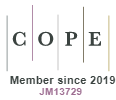Visual Perception of Engineering Institutional Campuses’ Entrance Edifices of Tamil Nadu Region, India
DOI:
https://doi.org/10.15415/cs.2019.71001Keywords:
Entrance Edifice, Imageability, Institutional Campus, Observers’ Perception, Visual ElementsAbstract
Institutional Campuses are increasing in numbers but struggling to market themselves in a highly competitive business domain. The entrance edifice of these campuses is an Artifact, presenting a visual representation of their imperial status in society. To empirically analyze how these edifices create meaning in recently established campuses, this paper presents a series of qualitative case studies from the Tamil Nadu region of India. Specifically, it seeks to identify the visual elements of the entrance edifice that influence observers’ perceptions of the Institutional Campus. With this regard, visual elements of the entrance edifice and their physical characters were examined and expand into a questionnaire. Through follow-up interviews with observers on the campus and analyses of the entrance edifice at each Institution, several themes were identified in the observers’ perceptions. The empirical findings suggest that several visual elements can significantly impact the visual perception of an Institutional Campus’s image: Form Identity, Architectural Elements, Scale and Portion, and Color and Material. Integrating these elements into an Institutional Campus entrance edifice design can strengthen its image in urban settings, potentially building up the image for the urban populations around the campus.
Downloads
References
Brown, G., and Brabyn, L. (2012). An analysis of the relationships between multiple values and physical landscapes on a regional scale using public participation GIS and landscape character classification. Landscape and urban planning, 107(3), 317–331.
Carlson, N. R. (2012). Physiology of behavior 11th edition. Pearson.
Fleming, R. W. (2014). Visual perception of materials and their properties. Vision research, 94, 62–75.
Franz, G., Von der Heyde, M. and Bulthoff, H. (2003). An empirical approach to the experience of architectural space in VR. Retrieved from http://www.kyb.tuebingen.mpg.de/publications/pdfs/pdf2232.pdf
Gehl, J., Kaefer, L. J. and Reigstad, S. (2006). Close encounters with buildings. Urban design international, 11(1), 29–47.
Goodman, N. and Elgin, C. Z. (1988). Reconceptions in philosophy and other arts and sciences. Hackett Publishing.
Hajrasouliha, A. (2017). Campus score: Measuring university campus qualities. Landscape and Urban Planning, 158, 166–176.
Heffernan, E., Heffernan, T. and Pan, W. (2014). The relationship between the quality of active frontages and public perceptions of public spaces. Urban Design International, 19(1), 92–102.
Humphrey, G. (1924). The psychology of the gestalt. Journal of Educational Psychology, 15(7), 401.
Jonathan, R. (1994). Facadism. USA: Routledge.
Kim, J. and Ha, M. (2015). A study of the environmental elements affecting campus images. Journal of Asian Architecture and Building Engineering, 14(1), 1–8.
Lynch, K. (1960). The image of the city (Vol. 11). MIT press.
Manning, P. (1991). Environmental aesthetic design: Identifying and achieving desired environmental effects, particularly “image” and “atmosphere”. Building and Environment, 26(4), 331–340.
Marcouyeux, A. and Fleury-Bahi, G. (2011). Place-identity in a school setting: Effects of the place image. Environment and Behavior, 43(3), 344–362.
Nasar, J. L. (1994). Urban design aesthetics: The evaluative qualities of building exteriors. Environment and behavior, 26(3), 377–401.
Park, H. and Kim, J. (2000). Environmental Cognition and Usage Behavior on University Campus. Journal of Human Ecology, 2(1), 25–41.
Rapoport, A. (1990). System of activities and system of settings. Domestic architecture and the use of space.
Rebano-Edwards, S. (2007). Modelling perceptions of building quality—A neural network approach. Building and Environment, 42(7), 2762–2777.
Sepe, M. (2013). Places and perceptions in contemporary city. Urban Design International, 18(2), 111–113. https://doi.org/10.1057/udi.2013.1
Stamps III, A. E. (2011). Effects of area, height, elongation, and color on perceived spaciousness. Environment and Behavior, 43(2), 252–273.
Stamps, A. E. (2010). Effects of permeability on perceived enclosure and spaciousness. Environment and Behavior, 42(6), 864–886.
Tawfid, M. A. G. (1997). Signs, Advertising and the Visual perception of Buildings: A Perceptual Selection in the View from the Street in Amman, Jordan. Habitat International, 21(2), 225–267.
Thirumaran, K. and Babu, A. R. (2014). An Experiential Study On The Ability Of Institutes Entrance Design Elements And Physical Features In Inducing Perceived Image Among The Observers: With Reference To Entrance Edifice Of Technical Institutes In Tiruchirappalli and Thanjavur Region. International Journal of Scientific & Technology Research, 3(2), 191–200.
Wong, N. H., Jusuf, S. K., La Win, A. A., Thu, H. K., Negara, T. S., and Xuchao, W. (2007). Environmental study of the impact of greenery in an institutional campus in the tropics. Building and environment, 42(8), 2949–2970.
Downloads
Published
Issue
Section
License
Articles in the Journal of Creative Space (Creat. Sp.) by Chitkara University Publications are Open Access articles that are published with licensed under a Creative Commons Attribution- CC-BY 4.0 International License. Based on a work at https://cs.chitkara.edu.in. This license permits one to use, remix, tweak and reproduction in any medium, even commercially provided one give credit for the original creation.
View Legal Code of the above-mentioned license, https://creativecommons.org/licenses/by/4.0/legalcode
View Licence Deed here https://creativecommons.org/licenses/by/4.0/
 |
Journal of Creative Space by Chitkara University Publications is licensed under a Creative Commons Attribution 4.0 International License. Based on a work at https://cs.chitkara.edu.in/ |







